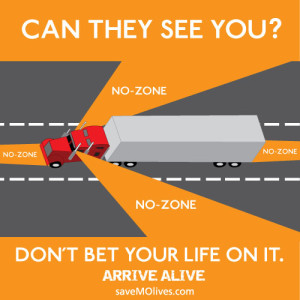 Nearly 4,000 people die nationwide each year in crashes involving large commercial trucks or buses. Many of those people are young, inexperienced drivers who don’t understand the dangers they and their passengers face every day on the road.
Nearly 4,000 people die nationwide each year in crashes involving large commercial trucks or buses. Many of those people are young, inexperienced drivers who don’t understand the dangers they and their passengers face every day on the road.
Federal officials, law enforcement and teen driving safety advocates are joining forces to help young drivers share the roadways more safely with large trucks.
The Teens in the Driver Seat program, developed by the Texas A&M Transportation Institute (TTI), is led by young drivers and passengers who reach out to their peers to help them understand and avoid dangerous driving situations, one of which involves large commercial vehicles.
“We need to remember that commercial vehicles are big and heavy and need lots of room to stop,” says Presley Price, co-chair of the Teens in the Driver Seat Teen Advisory Board. “They also have big blind spots, and if you’re in one of those blind spots, you’re in the dangerous ‘no zone.’”
Cutting in front of a big rig or following immediately behind puts a driver in that “no zone,” and the most dangerous “no zone” is on the right side of the truck. Those “no zones” are a factor in many crashes, 70 percent of which happen at speeds of 60 miles per hour or higher.
Price also noted that truck drivers work long and hard hours, often working more than 10 hours a day for several days in a row, putting them at a higher risk for driver fatigue.
“It all comes down to two things,” she says. “We need to respect the rig and we need to practice courtesy and caution.”
Although the number of teen-driver crashes has generally declined in recent years, those crashes still represent the leading cause of death and serious injury for teenagers.
“The teen driver safety problem is so big that no single group is able to solve it,” says Russell Henk, a senior research engineer at TTI. “Teens in the Driver Seat is proud to have the Federal Motor Carrier Safety Administration and San Antonio Police Department as partners in our fight against the number-one killer of teenagers in America.”
Search TeenAuto
Socialize with Us
Like us on FacebookFollow us on TwitterWatch our Channel